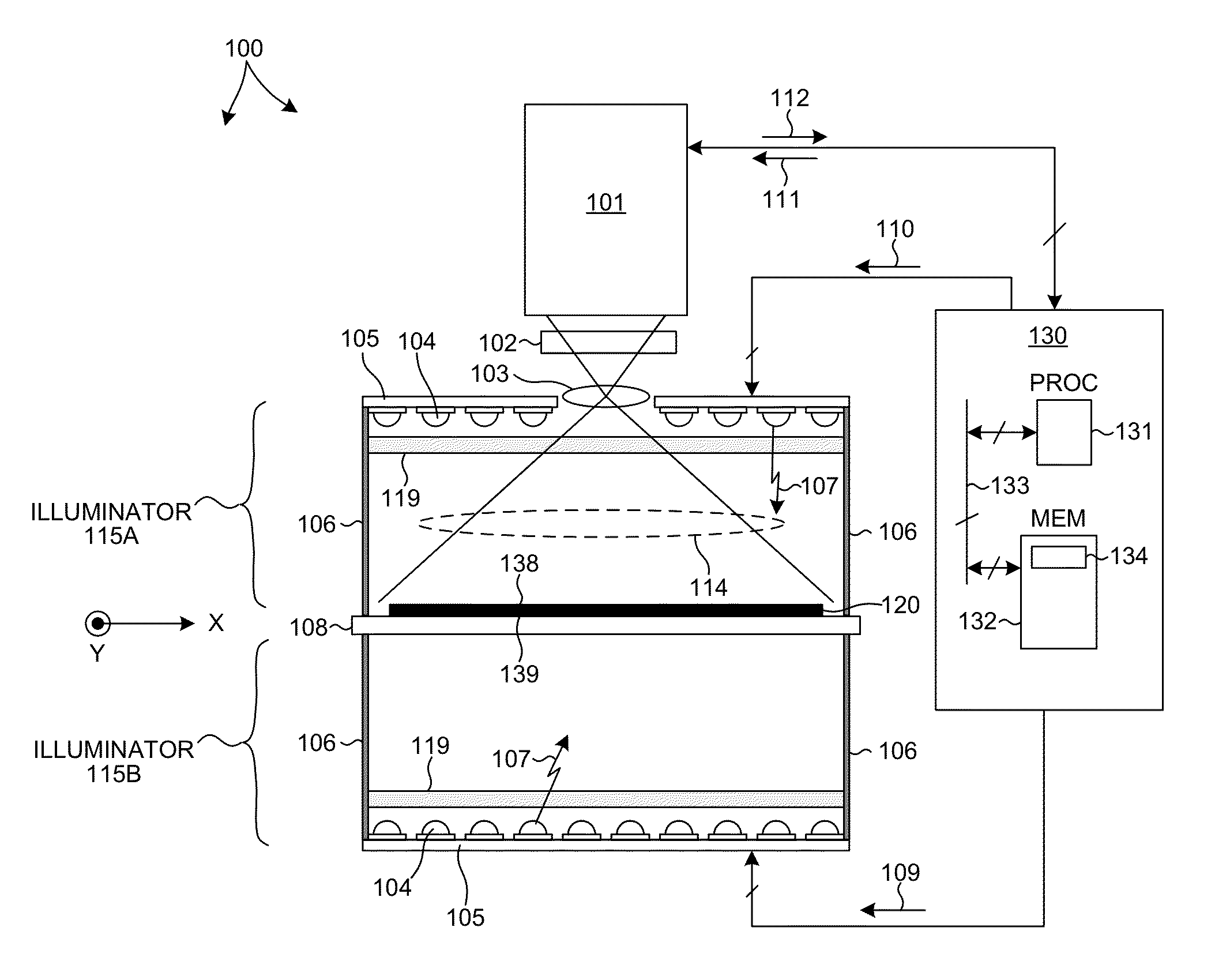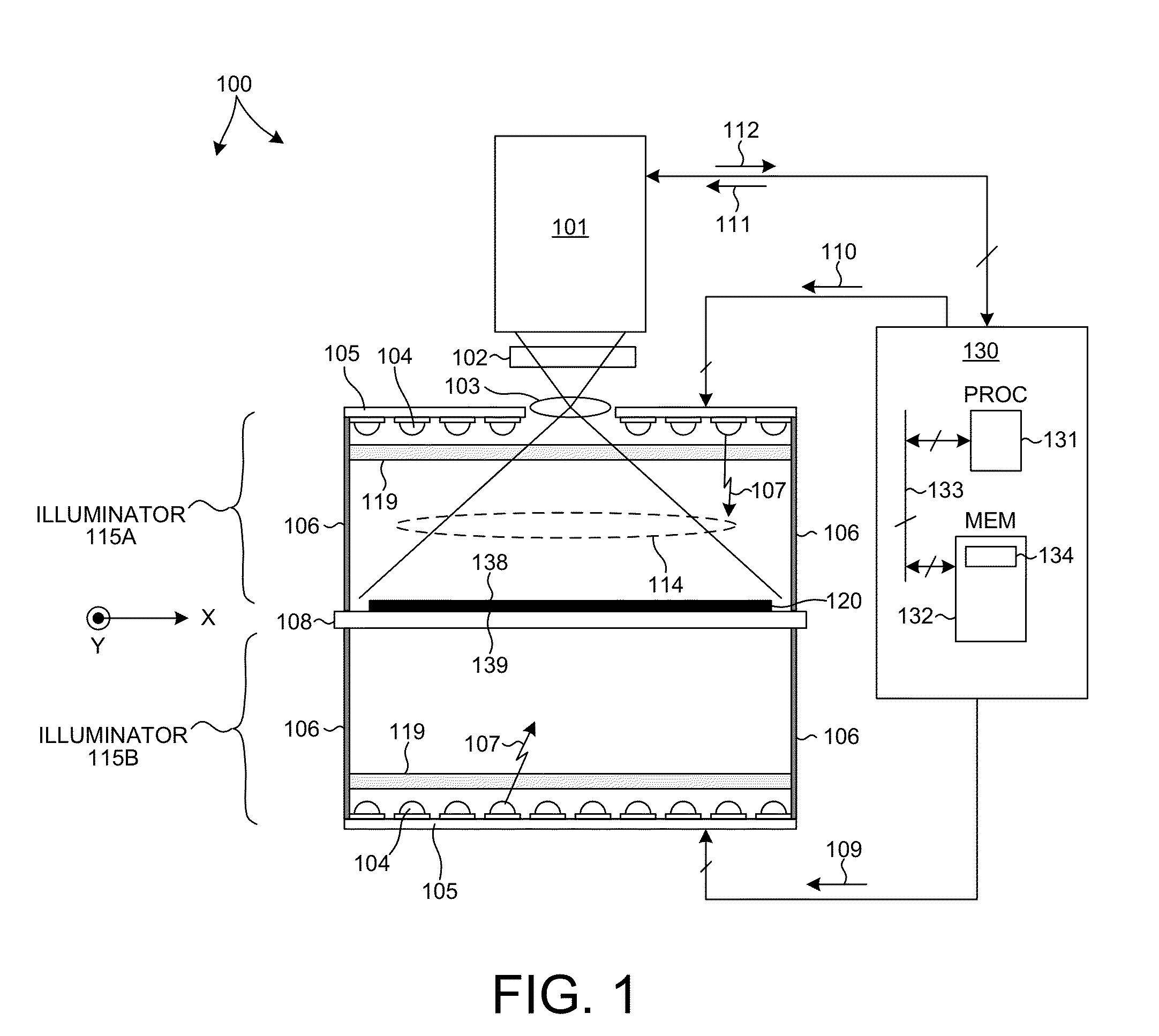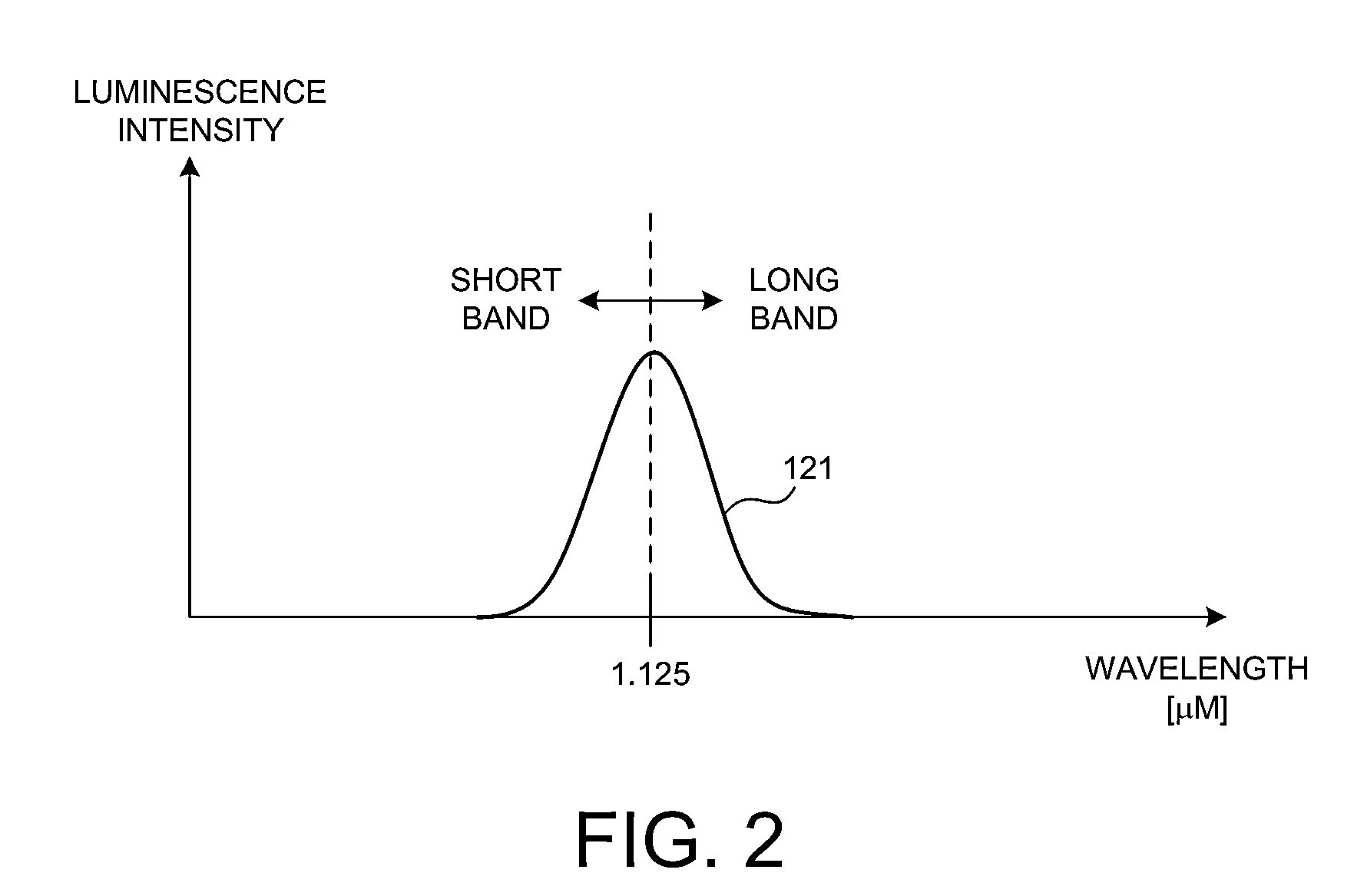Solar Metrology Methods And Apparatus
a metrology and solar energy technology, applied in the field of components inspection, can solve the problems of large surface defect density, low throughput capability, and inability to distinguish recombination events in the bulk of semiconductor materials, etc., to achieve the effect of improving yield and lowering manufacturing costs
- Summary
- Abstract
- Description
- Claims
- Application Information
AI Technical Summary
Benefits of technology
Problems solved by technology
Method used
Image
Examples
Embodiment Construction
[0047]Reference will now be made in detail to background examples and some embodiments of the invention, examples of which are illustrated in the accompanying drawings.
[0048]FIG. 1 is a simplified schematic view of one embodiment of an inspection system 100 that may be used to perform the inspection methods described herein. For simplification, some optical components of the system have been omitted. By way of example, folding mirrors, beam forming optics, polarizers, additional light sources, additional spectral filters, and additional light capture devices may also be included. All such variations are within the scope of the invention described herein. The inspection system described herein may be used for inspecting solar films, as well as semiconductor wafers.
[0049]As illustrated in FIG. 1, inspection system 100 includes a light capture device 101, a controller 130, a top side illuminator 115A and a bottom side illuminator 115B, and a specimen 120 under inspection. Each illumina...
PUM
| Property | Measurement | Unit |
|---|---|---|
| peak wavelength | aaaaa | aaaaa |
| peak wavelength | aaaaa | aaaaa |
| peak wavelength | aaaaa | aaaaa |
Abstract
Description
Claims
Application Information
 Login to View More
Login to View More - R&D
- Intellectual Property
- Life Sciences
- Materials
- Tech Scout
- Unparalleled Data Quality
- Higher Quality Content
- 60% Fewer Hallucinations
Browse by: Latest US Patents, China's latest patents, Technical Efficacy Thesaurus, Application Domain, Technology Topic, Popular Technical Reports.
© 2025 PatSnap. All rights reserved.Legal|Privacy policy|Modern Slavery Act Transparency Statement|Sitemap|About US| Contact US: help@patsnap.com



